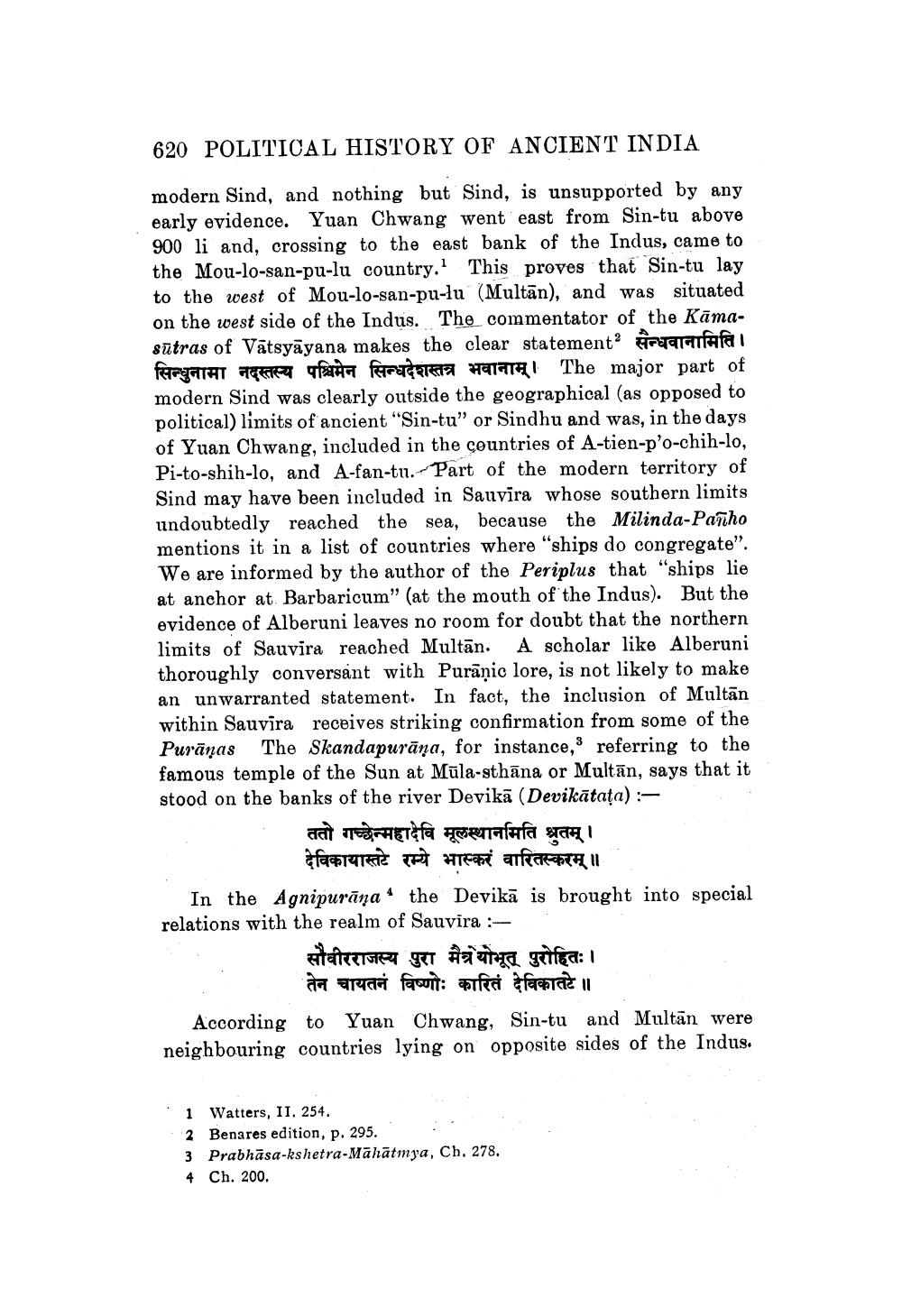________________
620 POLITICAL HISTORY OF ANCIENT INDIA
modern Sind, and nothing but Sind, is unsupported by any early evidence. Yuan Chwang went east from Sin-tu above 900 li and, crossing to the east bank of the Indus, came to the Mou-lo-san-pu-lu country. This proves that Sin-tu lay to the west of Mou-lo-san-pu-lu (Multān), and was situated on the west side of the Indus. The commentator of the Kāmasutras of Vātsyāyana makes the clear statement frafata FESSITAT PER AT FAPTER 17 HAFI The major part of modern Sind was clearly outside the geographical (as opposed to political) limits of ancient "Sin-tu” or Sindhu and was, in the days of Yuan Chwang, included in the countries of A-tien-p'o-chih-lo, Pi-to-shih-lo, and A-fan-tu. Part of the modern territory of Sind may have been included in Sauvira whose southern limits undoubtedly reached the sea, because the Milinda-Panho mentions it in a list of countries where "ships do congregate". We are informed by the author of the Periplus that "ships lie at anchor at Barbaricum" (at the mouth of the Indus). But the evidence of Alberuni leaves no room for doubt that the northern limits of Sauvira reached Multān. A scholar like Alberuni thoroughly conversant with Purāņic lore, is not likely to make an unwarranted statement. In fact, the inclusion of Multan within Sauvīra receives striking confirmation from some of the Purāṇas The Skandapurāna, for instance, referring to the famous temple of the Sun at Mūla-sthāna or Multān, says that it stood on the banks of the river Devikā (Devikātaţa) :-
. ततो गच्छेन्महादेवि मूलस्थानमिति श्रुतम् ।
देविकायास्तटे रम्ये भास्करं वारितस्करम् ॥ In the Agnipurāņathe Devikā is brought into special relations with the realm of Sauvira :
सौवीरराजस्य पुरा मैत्रेयोभूत् पुरोहितः।
तेन चायतनं विष्णोः कारितं देविकातटे ॥ According to Yuan Chwang, Sin-tu and Multān were neighbouring countries lying on opposite sides of the Indus.
1 Watters, II. 254. 2 Benares edition, p. 295. 3 Prabhāsa-kshetra-Māhātmya, Ch. 278. 4 Ch. 200.




